10 conflicts to watch in 2023
Russia’s invasion of Ukraine is still reverberating around the world – and setting the stage for more large-scale violence to come.
Will he, or won’t he? This time last year, that was the question. Russian President Vladimir Putin had massed almost 200,000 troops on Ukraine’s borders. US intelligence warned Russia was preparing for all-out war. All the signs pointed to an assault, bar one: It seemed unthinkable.
True, Russia had attacked Ukraine in 2014, and in the spring of 2021 had staged a dress rehearsal for an invasion, building up forces on the frontier before sending them home. Putin seemed ever angrier at Kyiv’s refusal to bow to his will. He openly derided Ukrainian national identity and sovereignty.
Still, it was shocking, when Russian forces did roll in, that a nuclear-armed power in 2022 would seek to conquer a neighbour in an act of unprovoked aggression.
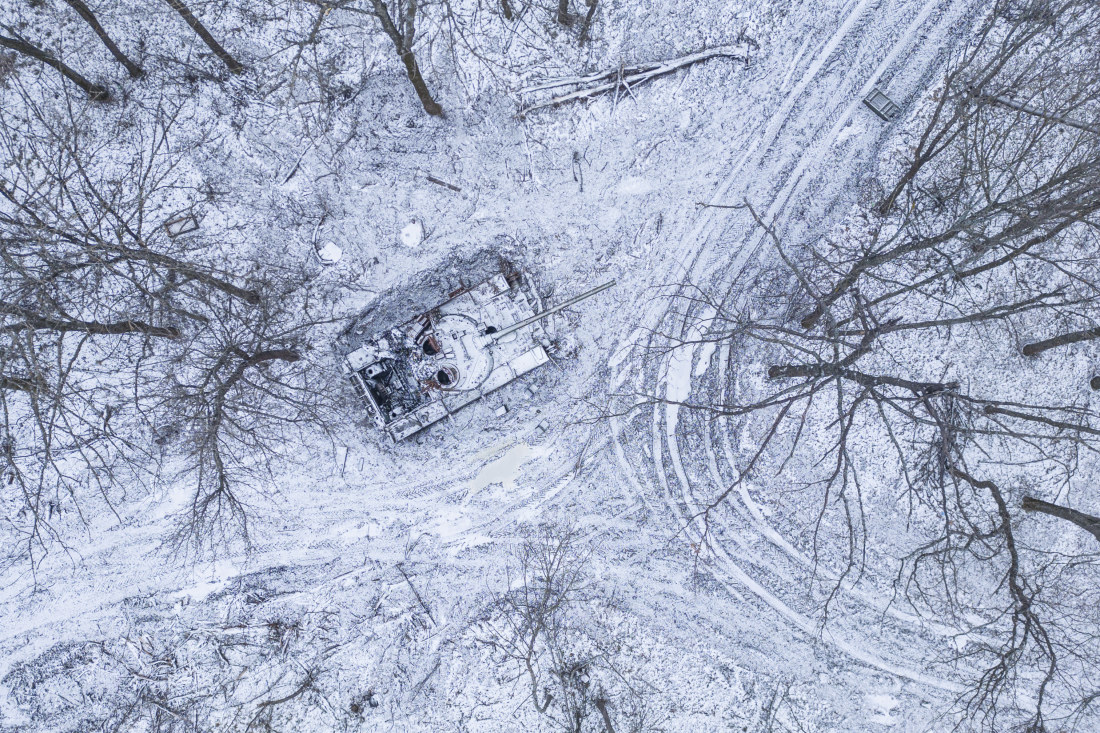
The war with Ukraine has laid bare weaknesses in Russia’s military that operations in Syria (2015) and Ukraine (2014 and 2015) had disguised. AP
Beyond the devastation in Ukraine, the war has cast a long shadow over global affairs.
For Russia, so far, it has been disastrous.
An offensive that was supposed to subjugate Ukraine, weaken the West, and strengthen the Kremlin has, up to now, done the opposite.
It has turbocharged Ukrainian nationalism and pushed Kyiv closer to Europe. It has breathed new purpose into a previously adrift NATO. Finland and Sweden joining the alliance, which seems on track, will dramatically shift the balance of force in northern Europe, more than doubling the length of Russia’s borders with NATO states.
The war has laid bare weaknesses in Russia’s military that operations in Syria (2015) and Ukraine (2014 and 2015) had disguised. It has revealed resolve and competence in the West that fiascoes in Afghanistan, Iraq, and Libya had obscured (though admittedly things might have been different had the US been under other leadership).
Still, the war is far from over. Russia’s economy has adapted to massive Western sanctions. The Kremlin appears convinced that Russia has staying power.
For China, the war has been mostly a headache.
Despite Chinese President Xi Jinping’s public embrace of Putin and ongoing trade between the two countries that has helped Russia weather sanctions, Beijing’s material support has been lacklustre. Xi has not sent weapons. He appears disturbed by Putin’s travails and nuclear bluster. Beijing does not want to undercut Moscow and is unlikely to compel Putin to reach a settlement. But neither does it wish to provoke Western capitals by abetting the invasion.
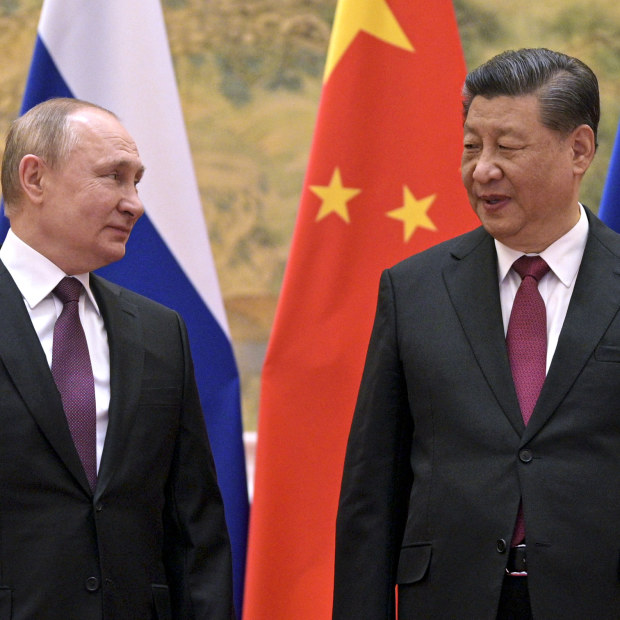
Russian President Vladimir Putin and Chinese President Xi Jinping in Beijing in February 2022. AP
As for the relationship between the US and China, which will dominate the coming decades, the Russia-Ukraine war has not changed the fundamentals. US House Speaker Nancy Pelosi’s August 2022 visit to Taiwan riled Beijing, but the meeting three months later between US President Joe Biden and Xi promised a resumption of dialogue.
Elsewhere in the global south, the war exposed raw nerves. Most non-Western capitals joined in UN General Assembly votes against Russia’s aggression. But few have condemned Putin publicly or imposed sanctions.
Indeed, outside Europe, the war’s biggest ramifications are economic. Financial jitters triggered by the invasion and announcement of sanctions roiled markets that COVID-19 had already shaken. Food and fuel commodity prices shot up, sparking a cost-of-living crisis.
Though prices have since come down, inflation remains rampant, magnifying debt problems. The pandemic and economic crisis are two among several mutually reinforcing threats, notably also including climate change and food insecurity, that can beset vulnerable countries and fuel unrest. On this year’s list, Pakistan is a prime example. Many countries are in similar boats.
Did 2022 give any cause for optimism for the year ahead? Given Ukraine’s anguish, finding good in the war might seem perverse. But had Kyiv put up less of a fight, had the West been less united than it was under Biden’s leadership, and had Russia quickly prevailed, Europe, and arguably the world, would be in a more dangerous place. Nor was Putin the only strongman who had a bad year. Several populists whose politics had recently sown much discord also lost out.
Jair Bolsonaro was defeated in Brazil. Former US President Donald Trump appears, for now, a diminished figure. Marine Le Pen failed to win the French presidency. In Italy, where populists did win power, they mostly tacked centre once in office. Far-right populism is not a spent force, but some of its champions suffered setbacks. Plus, multilateral diplomacy largely muddled through.
Notwithstanding their bitter differences, China, Russia, and Western powers still mostly saw the U.N. Security Council as a venue to manage crises outside Ukraine. A deal that could end Ethiopia’s horrific war and warmer Colombia-Venezuela ties show that peacemaking elsewhere can trundle along despite conflict in Europe.
Overall, though, it was an unsettling year, all the more so given that it’s the latest in a string of them.
So, will 2023 see major powers go to war or break a nearly 80-year nuclear taboo? Will political crises, economic hardship, and climate breakdown cause social meltdown in not just individual countries but a swath of the world? Worst-case answers to this year’s big questions seem far-fetched. But after the past few years, it would be complacent to dismiss the unthinkable.
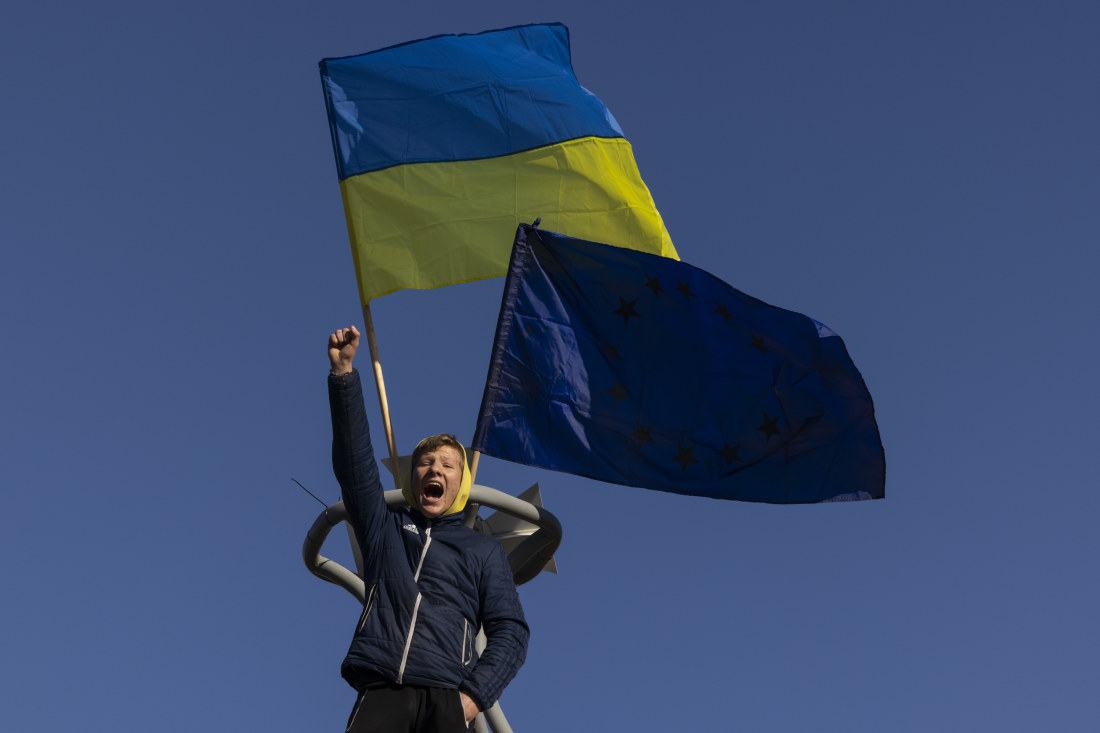
Beijing’s material support for Russia’s war on Ukraine has been “lacklustre”. President Xi Jinping has not sent weapons and appears disturbed by Vladimir Putin’s nuclear-laced threats. Getty
Ukraine
Thus far, Ukraine has resisted Russia’s assault, thanks to Ukrainians’ valour and Western aid. But after nearly a year of fighting, there’s no end in sight.
When Russia attacked Ukraine last February 24, the Kremlin seemingly expected to rout Ukraine’s government and install a more pliant regime. It miscalculated. Ukraine’s resistance was as fierce as Russia’s planning was inept. Driven back from around Kyiv in the spring, Moscow concentrated forces in the east and south. Then, in late summer, Ukrainian troops, now armed with more powerful Western-supplied weapons, advanced there, too.
Yet, Moscow has upped the ante. It mobilised perhaps 300,000 additional men, although data is unreliable.
Thus far, little suggests either Kyiv or Moscow will back down. Ukrainians see each new attack and revelation of Russian abuses (including summary executions and sexual abuse) as more reason to fight. In Russia, propaganda and oppression deter opposition. Neither side shows genuine appetite for peace talks.
Stalemate is setting in, though how long it will last is anyone’s guess.
As for the truly cataclysmic scenario – a potentially nuclear escalation between NATO and Russia – both Moscow and Western capitals have taken pains to avoid direct clashes.
Certainly, Western leaders should keep the door open to a settlement by making clear to the Kremlin the benefits, particularly in sanctions relief, that would follow a deal Ukraine can live with.
For now, though, they judge that, for all the war’s horrors, backing Ukraine, even at some risk of nuclear escalation, is better than allowing Russia to prevail through a brutal military campaign and nuclear menacing. That’s a tough calculation to make; to some degree, it disconcerts other parts of the world. Thus far, though, it’s the right one.
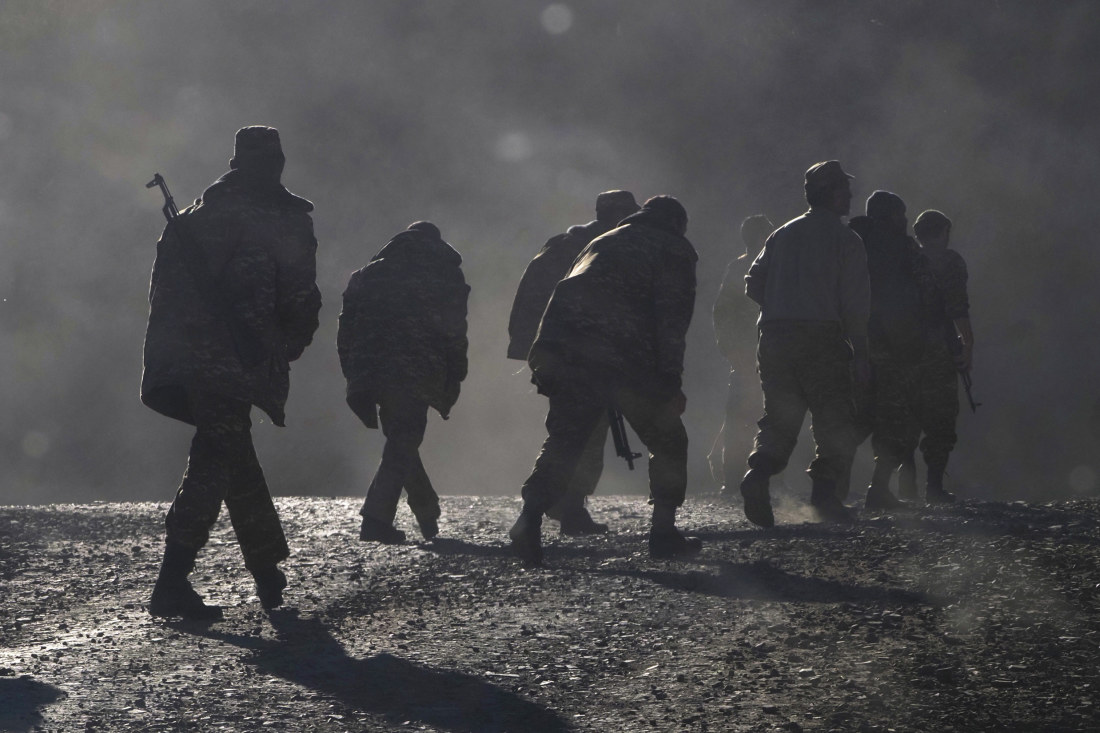
Ethnic Armenian soldiers walk along the road near the border between Nagorno-Karabakh. AP
Armenia and Azerbaijan
If Russia’s war in Ukraine has reverberated across crises worldwide, its impact has been especially acute in the South Caucasus. Two years after their latest war over Nagorno-Karabakh, Armenia and Azerbaijan appear headed toward another confrontation. Russia’s travails in Ukraine have upset calculations in the region.
A new war would be shorter but no less dramatic than the six-week conflict in 2020. That war, which killed more than 7000 soldiers, saw Azerbaijani forces rout Armenians from parts of the Nagorno-Karabakh enclave and nearby areas, all of which had been held by Armenian forces since the early 1990s. Moscow eventually brokered a cease-fire.
Since then, the balance has shifted further in Azerbaijan’s favour. The Armenian army has not replenished its troops or weapons, as Russia, its traditional arms broker, is short on supplies. Azerbaijan, by contrast, has been ramping up. Its army outmatches Armenia’s several times over, is far better equipped, and is backed by Turkey. Heightened European demand for Azerbaijani gas has also emboldened Baku.
The war in Ukraine has also overshadowed peace talks. Moscow has historically tended to lead peacemaking efforts over Nagorno-Karabakh. The 2020 cease-fire was supposed to open up trade in the region, including by reestablishing a direct route through Armenia from Azerbaijan to its exclave Nakhchivan on the Iranian border. Improving trade would pave the way to compromise on the thorny question of Nagorno-Karabakh’s future.
In late 2021, Moscow accepted new European Union-led mediation between Armenia and Azerbaijan, hoping that it would reinforce Russia’s peacemaking, which had been making little headway.
As a result, there are two draft agreements floating around – one prepared by Russia and another Armenia and Azerbaijan themselves have developed with Western backing (many sections of which have contrasting text proposed by the two sides).
Each draft tackles trade and stabilisation of the Armenian-Azerbaijani border, with the fate of Armenians in Nagorno-Karabakh left to a separate and so far uninitiated process.
The bilateral track supported by the West is probably more promising, in part because it’s homegrown, though how Moscow would respond if it yielded an agreement is unclear. In any case, the two sides are far apart. Baku holds all the cards, and it would gain more from a deal, notably in terms of trade and foreign relations, than it would militarily.
The danger is that the talks go nowhere or another flare-up sinks both the Moscow-led and West-backed tracks and Azerbaijan takes what it can by force.
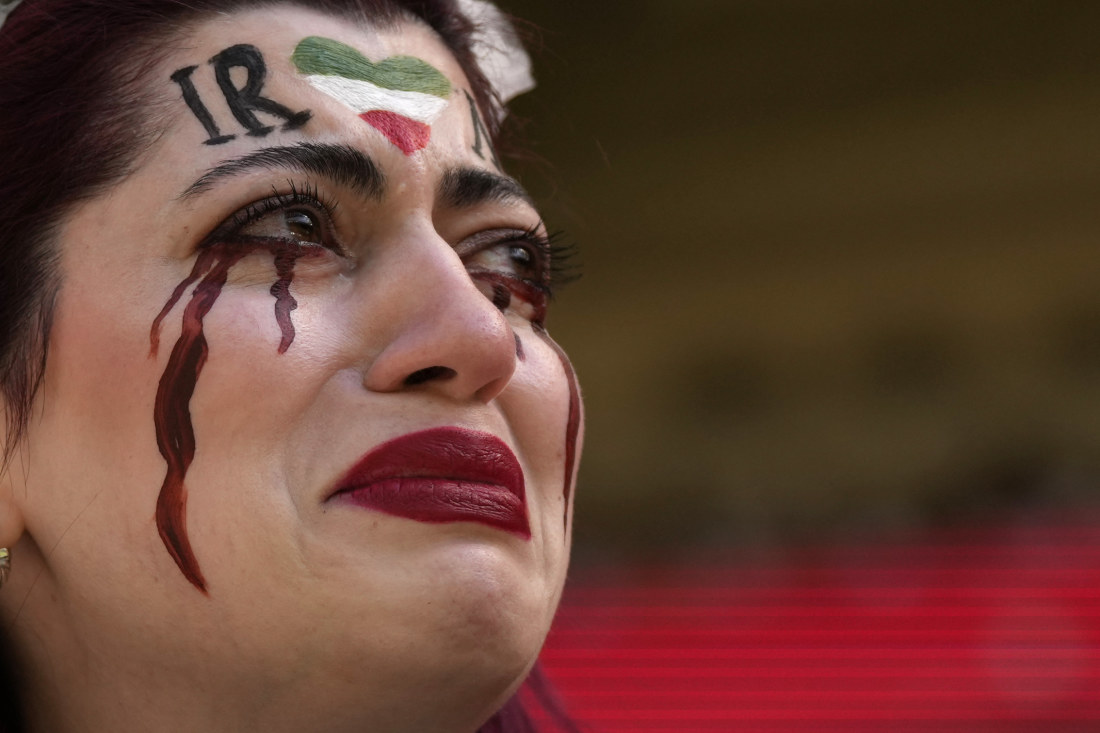
The challenge for Iran’s heroic young protesters is to win over older middle-class Iranians. AP
Iran
Massive anti-regime protests, Iran’s merciless crackdown, and its supply of weapons to Russia have left the Islamic Republic more isolated than at any point in decades just as a crisis over its nuclear program is brewing.
The protests rocking the country have posed the most durable and determined threat to the Islamic Republic’s authority since the 2009 Green Movement. Tens of thousands of mostly young people, fronted by women and schoolgirls who reject the compulsory hijab as a symbol of misogyny and broader oppression, have taken to the streets in acts of raw defiance against the regime.
The Iranian government has killed hundreds of people in response, including dozens of children. Formal executions of protesters have followed trials that human rights groups regard as shams. Thousands are in jail, many subject to horrific torture. The regime paints what is an emphatic grassroots expression of popular anti-government sentiment, particularly among youth and in long-neglected peripheries, as a foreign plot. Few buy it.
The challenge for Iran’s heroic young protesters is to win over older middle-class Iranians, many of whom sympathise but fear the regime’s violence or radical change.
Meanwhile, talks to revive the 2015 nuclear deal, stalled since early September, are now in deep freeze. Tehran’s nuclear capability has advanced leaps and bounds over the past few years. Its uranium enrichment capacity has expanded, and its breakout time is down to almost nil.
Monitoring by the International Atomic Energy Agency is severely curtailed. The moment the US and its allies have long hoped to avoid – when they must choose between the possibility of Iran acquiring a nuclear bomb or using force to prevent that happening – seems to be coming into view.
Even if they can muddle through for some months, October 2023, when UN restrictions on Iran’s ballistic missiles lapse, is a flash point.
In this light, keeping the door open to diplomacy makes sense. Western capitals – revulsed by the Islamic Republic’s repression at home, incensed by its arms supplies to Russia, and under pressure from vocal domestic constituencies that savage anyone who recommends talks – understandably worry that engaging Tehran could throw the regime a lifeline.
Thus far, however, they have opted not to completely sever contacts – partly because some need to negotiate hostage releases but mostly with the nuclear threat in mind. Given today’s poisonous relations, prospects for talks to defuse the nuclear crisis appear dim. But at least gaining an understanding over each other’s red lines could help keep a lid on tensions until there is more space for de-escalation and substantive diplomatic engagement.
It’s hard to see protesters gaining were the nuclear crisis to come to a head; more likely, the embattled regime could change the subject at home and exert an even tighter grip.
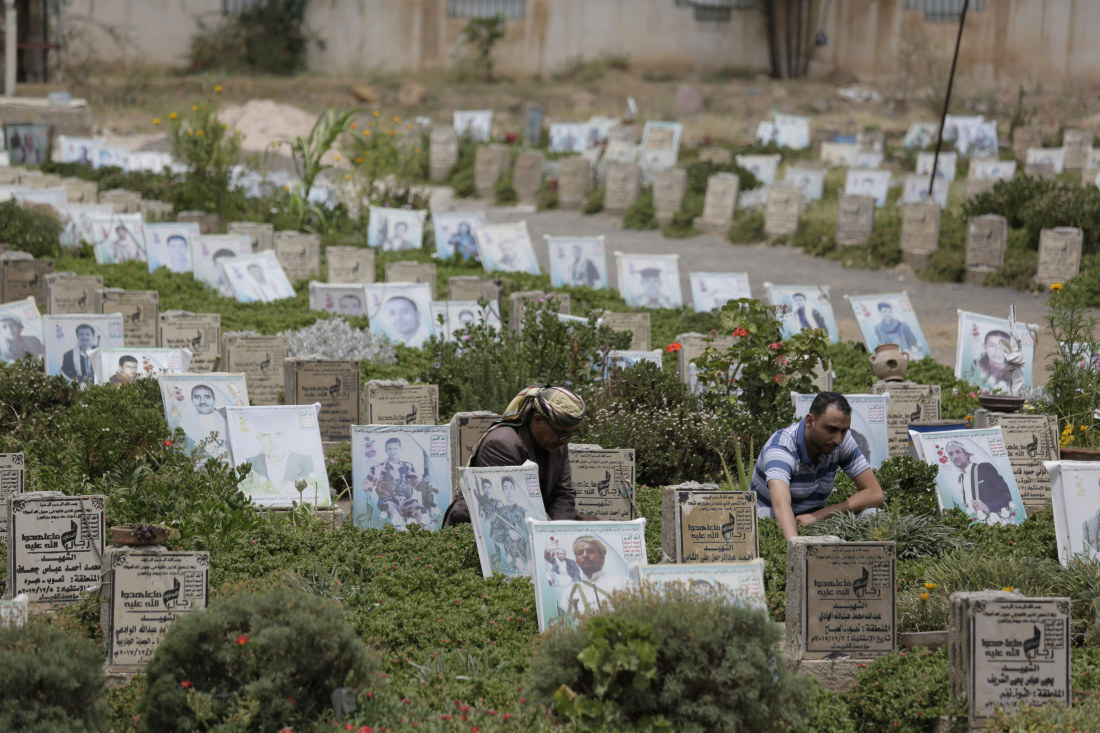
In this photo taken in July, Yemeni men offer prayers at the grave of a relative killed in the ongoing conflict. AP
Yemen
Yemen is in limbo. A truce last April between Houthi rebels and the country’s internationally recognised government, backed primarily by Saudi Arabia and the United Arab Emirates, lapsed last October. Major fighting has not resumed, but both sides are preparing to go back to war.
The UN-brokered truce was an unexpected bright spot in a brutal eight-year conflict. In November 2021, Houthis, who control much of Yemen’s northwest, seemed to be nearing victory. Had they taken the city of Marib and nearby oil and gas facilities, that would have won them the war for the north, bought their quasi-state badly needed funds, and spelled the end for then-President Abed Rabbo Mansour Hadi’s government.
Their offensive was averted when UAE-affiliated forces pushed the Houthis out of strategic territory in Marib and neighbouring Shabwah in January 2022. The Houthis responded with cross-border missile and drone strikes on the UAE and Saudi Arabia. Then the Ukraine war prompted global food and fuel shortages that placed new pressures on all parties.
The resulting stalemate created space for mediation. In early April 2022, the UN announced a two-month truce between Hadi’s government and the Houthis. Riyadh, increasingly disillusioned with the war, backed the deal. Several days later, Hadi resigned. He was replaced by an eight-man presidential leadership council (PLC), handpicked by the Saudis and Emiratis, which is more representative of the coalition of Yemeni factions fighting the Houthis and, almost as often, each other.
The risk of renewed war is uncomfortably high. Some within the Houthi camp lean toward another offensive, though for now, while probably stronger than their rivals, the Houthis are starved of funds and their forces are weakened. Alternatively, they might strike a deal with the Saudis on salary payments, extend the truce, and use the money and time to regroup. Some Houthi leaders hope for a wider agreement with Riyadh that entails a Saudi exit from the conflict and cements the Houthis’ status as Yemen’s dominant force.
But such an arrangement, by ignoring the interests of many anti-Houthi factions that already chafe at being left out of bilateral talks, would likely plunge Yemen into a new phase of war. Even with the Saudis out, it seems unlikely that the Houthis could easily overrun all of Yemen, as the Taliban did in Afghanistan.
Better would be an extended truce that paves the way to intra-Yemeni talks. A genuine settlement has to meet all major Yemeni factions’ requirements and probably requires U.N. mediation. But with the Houthis sensing that they get more through intransigence and with Iran, the one outside actor with some influence over the group, in no mood to help, such a settlement is perhaps the least likely scenario.
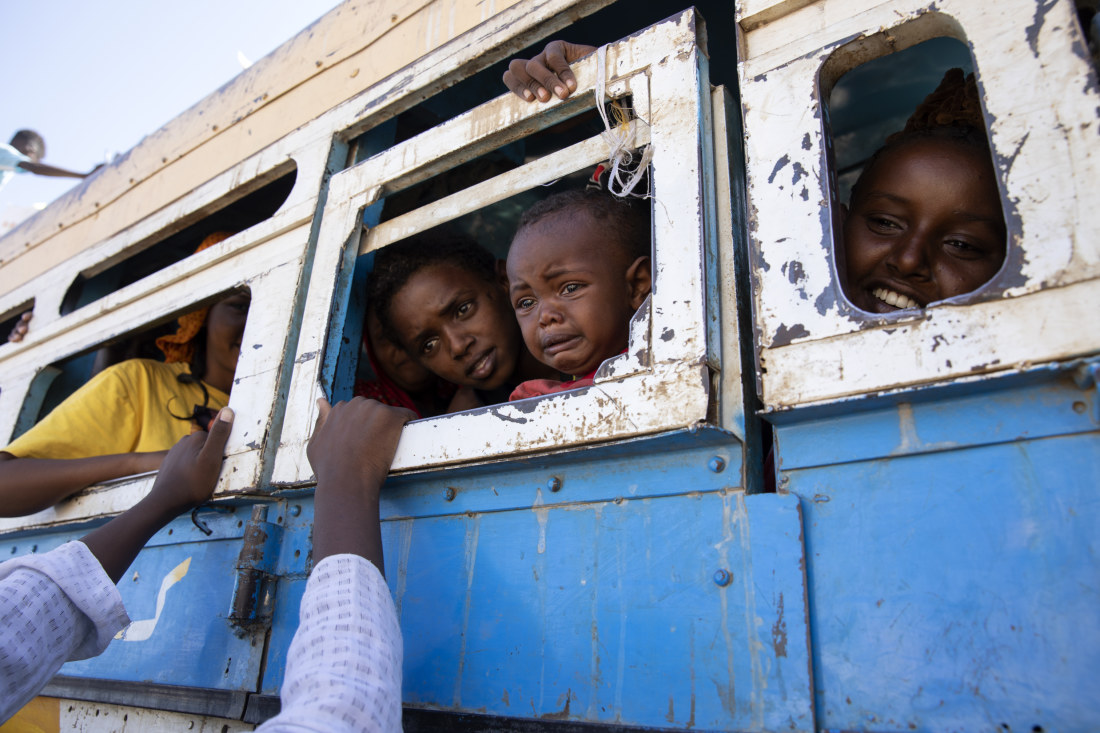
Researchers at Belgium’s Ghent University estimate that, as of August 2022, 385,000 to 600,000 civilians had died of war-related causes. AP
Ethiopia
One of 2022’s deadliest wars, in and around Ethiopia’s Tigray region, has for now ground to a halt. Two of the main belligerents – Ethiopian Prime Minister Abiy Ahmed’s government and the Tigray People’s Liberation Front (TPLF), which dominated Ethiopian politics for decades before Abiy assumed power in 2018 and then fell out with him – signed a deal last November 2 in Pretoria, South Africa, and, 10 days later, a follow-up agreement in Nairobi.
But the calm is fragile. Key questions remain unsettled, notably whether Tigray’s forces will disarm and whether Eritrean President Isaias Afwerki, whose army has been fighting alongside Ethiopian troops, will withdraw his troops to the internationally recognised border.
The toll has been staggering. Researchers at Belgium’s Ghent University estimate that, as of August 2022, 385,000 to 600,000 civilians had died of war-related causes. Sources from both sides say hundreds of thousands of combatants have died in fighting since the start of the August offensive. All parties stand accused of atrocities, with Eritrean forces leaving a trail of particularly cruel devastation.
Sexual violence has been rampant, seemingly used strategically to humiliate and terrorise civilians. For most of the war, Addis Ababa blockaded Tigray, cutting off electricity, telecommunications, and banking and constricting food, medicine, and other supplies.
The Pretoria agreement was a victory for Abiy. But plenty could go wrong. A dispute over Western Tigray’s fertile borderlands, which Amharas call Welkait and claim as their own, is especially thorny.
It’s Abiy’s battlefield ally, Isaias, who could end up his biggest headache. In 2018, Abiy’s peace deal with Isaias ended decades of hostility between the two countries, even if to some degree it also paved the way for the joint Ethiopia-Eritrea offensive against Tigray.
Abiy has come out on top in his struggle with the TPLF. But despite all the bad blood, he probably needs some form of accommodation with Tigray’s leaders to avoid sowing the seeds of another insurgency.
His government needs to determine the TPLF’s role in any interim regional administration and whether to permit some Tigrayan soldiers to become regional forces or re-enter the federal army.
Whether the Ethiopian prime minister recognises the need for magnanimity is unclear. Equally critical, though, is whether, if he does, he can sell that to Isaias, who joined the war hoping to kill off his archenemy, the TPLF.
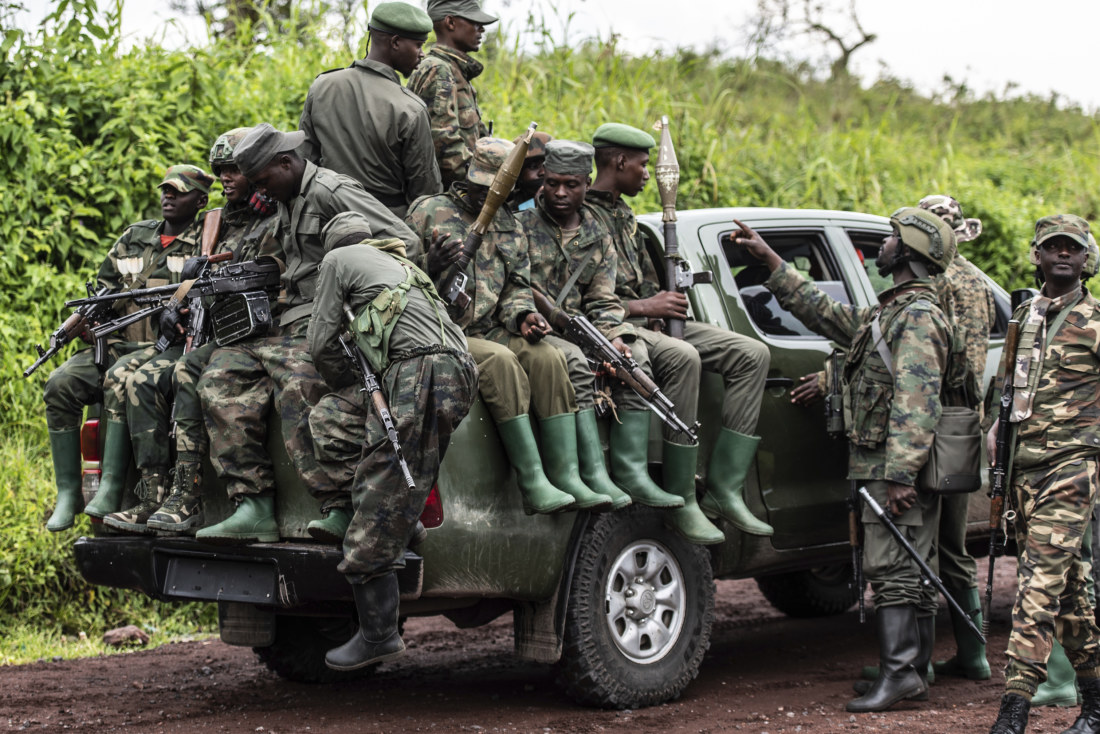
M23’s sudden reemergence owes as much to tensions among Great Lakes states as it does to local dynamics. AP
The Congo and the Great Lakes
M23, a previously dormant rebel group, which UN reports suggest is backed by Rwanda, is wreaking havoc in eastern Democratic Republic of the Congo. Fighting has driven tens of thousands of people from their homes and could spiral into a wider regional proxy war.
M23 holds several towns and surrounds the provincial capital of Goma. In 2013, the group was beaten back by a ramped-up United Nations force but now appears well-armed and organised.
It includes ex-Congolese soldiers, many of whom are Tutsis, an ethnic group spread across Africa’s Great Lakes region, and professes to champion communal interests.
M23’s sudden reemergence owes as much to tensions among Great Lakes states as it does to local dynamics.
An East African military mission – minus Rwanda, whose contingents Kinshasa rejected – has a mandate to restore calm to eastern Congo. The UN has a 14,000-strong peacekeeping force, with many housed in Goma, but it appears reluctant to take on insurgents and is deeply unpopular among many Congolese. Instead, Kenya, as part of the regional force, has the unenviable task of taking the fight to M23.
Long-suffering locals have high hopes that Kenyan troops can beat back rebels, but Kenya sensibly views the goal more as securing Goma and its surrounding main roads and pushing M23 into a cease-fire.
The group might then rejoin peace talks between the Congolese government and dozens of eastern armed groups from which it had been expelled due to the fighting.
Getting Rwanda on board will be crucial, given its influence on M23 leaders.
If that diplomacy fails, Kenyan troops could get bogged down in eastern Congo’s treacherous terrain. Already, the deployment of so many neighbours’ forces in eastern Congo runs the risk of a return to the proxy wars that tore the region apart in the 1990s and 2000s.
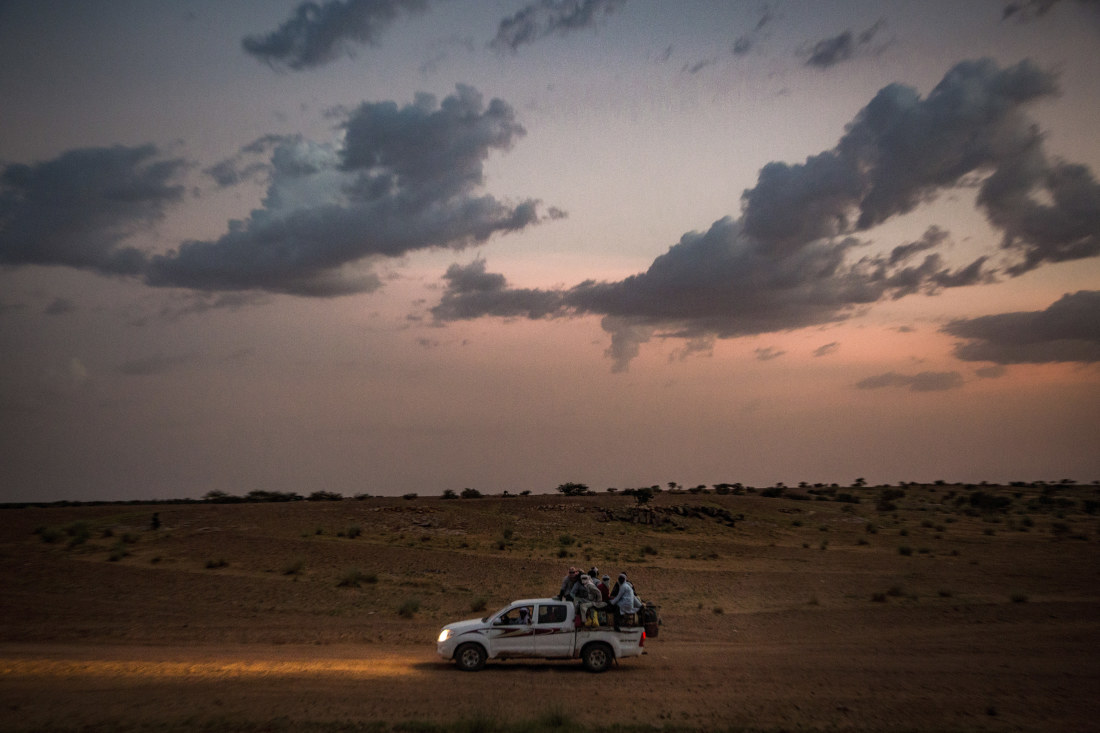
Truckloads of migrants on their way to Libya depart the area every week. Agadez is a fabled gateway town of sand and hustle through which hundreds of thousands of migrants now exit the Sahel region. NYT
The Sahel
Burkina Faso, Mali, and Niger show no signs of beating back stubborn Islamist insurgencies. Western leaders, whose military involvement over the past decade has done little to stem violence, seem at a loss at how to respond to coups in Burkina Faso and Mali.
Burkina Faso is in the direst straits. Jihadi groups control an estimated 40 per cent of its territory, including vast rural areas in the north and east. Militants have laid siege to a major northern town, Djibo, for months. Fighting has killed thousands of people and driven nearly 2 million from their homes.
As the losses mount, so does finger-pointing within the army. Two coups last year, both triggered by massacres of troops by militants, saw a lieutenant colonel, Paul-Henri Sandaogo Damiba, seize power last January, only to be ousted in September by a previously unknown captain, Ibrahim Traoré.
Traoré himself is struggling to unify divided security forces. He may follow the lead of his Malian counterparts by playing to populist sentiment, criticising France, and drawing closer to Russia. Most worryingly, Traoré is recruiting volunteers to battle jihadis, which could send ethnic bloodshed spiralling.
Outside involvement in the Sahel is evolving fast. France, which intervened to oust militants from northern Mali in 2013, has ended its operations in that country, given fraught ties with Bamako, though it retains bases in Niger.
A UN mission, in Mali since April 2013, has also struggled to make headway. The West now seems most concerned with preventing jihadis from spreading southward to the Gulf of Guinea.
Most vital at a moment of inflection for the region is that leaders rethink what has been a predominantly military-centric approach to tackling Islamists. Military operations play a role but must be subservient to efforts to mend intercommunal relations, win over people in the hinterlands, and potentially even talk to militant leaders.
Western governments should feel chastened by their record over the past decade. But as some Sahelian leaders turn to Moscow, it would be a mistake to cut ties and try to force them to pick sides.
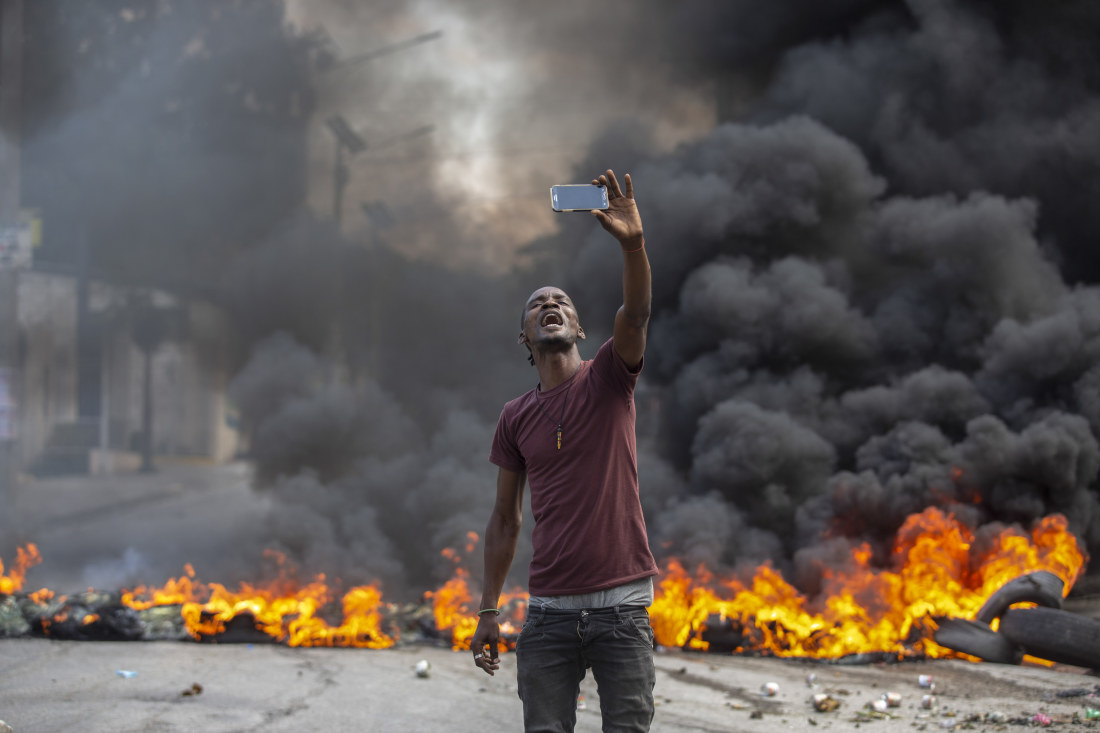
Hundreds of gangs control more than half of Haiti. They suffocate the capital, Port-au-Prince, by blocking roads and imposing a reign of terror. AP
Haiti
Since the murder of President Jovenel Moïse in July 2021, Haiti has been paralysed by political gridlock and rampant gang violence. Public services have collapsed and cholera is spreading. Things are so bad that some Haitians now pin their hopes on foreign troops, despite the dismal legacy of earlier interventions in Haiti.
Ariel Henry, Haiti’s interim prime minister who took over from Moïse, enjoys support from influential foreign powers but faces stiff Haitian resistance. Since he assumed power, Henry’s rule has been opposed by the Montana Accord, a group of opposition politicians and civil society representatives. Henry was supposed to steer a transition to elections, but rampant insecurity has prevented a vote, and Henry also disbanded the election commission.
Hundreds of gangs control more than half of the country. They suffocate the capital, Port-au-Prince, by blocking roads and imposing a reign of terror, including using rape to punish and intimidate people, sometimes targeting children as young as 10.
The biggest coalition, the G9, is headed by notorious gang leader Jimmy “Barbeque” Chérizier. Haiti’s gangs have existed for decades, often with ties to politicians. But their power has ballooned since Moïse’s murder.
Things have come to a head over the past six months. Last July, battles between the G9 and another gang over Cité Soleil, a slum near Port-au-Prince, killed more than 200 people in a little over a week.
Two months later, Henry lifted fuel subsidies, sending prices spiralling and causing mass protests, which gang members joined. The G9 then seized a major oil terminal, leaving almost the entire country with shortages of fuel, which has, among other things, disrupted access to clean drinking water. Chérizier said he would only give the terminal back once Henry stepped down, though Haitian police forces were able to recapture it some months later.
The result has been humanitarian catastrophe. Half the population, 4.7 million people, faces acute hunger, and almost 20,000 are thought to be at risk of starving. Aid workers’ struggles to reach health clinics combined with clean water shortages have given rise to resurgent cholera.
A recent World Health Organisation report said there were more than 13,000 cases between early October and early December, with 283 recorded deaths – but these are likely huge underestimates.
Faced with these challenges, Henry in October called for foreign military support.
US and Canadian sanctions on several sitting and former top politicians, alongside Chérizier, have sent shockwaves through Haitian elites and might give them some pause to think about future ties to gangs. But few foreign countries are champing at the bit to deploy troops.
That said, if Henry and his rivals were to agree on the role of such a mission and on a transitional road map, foreign forces could be Haiti’s best hope. Even their arrival and the threat of operations might lead gangs to abandon main roads and loosen their chokehold on the capital.
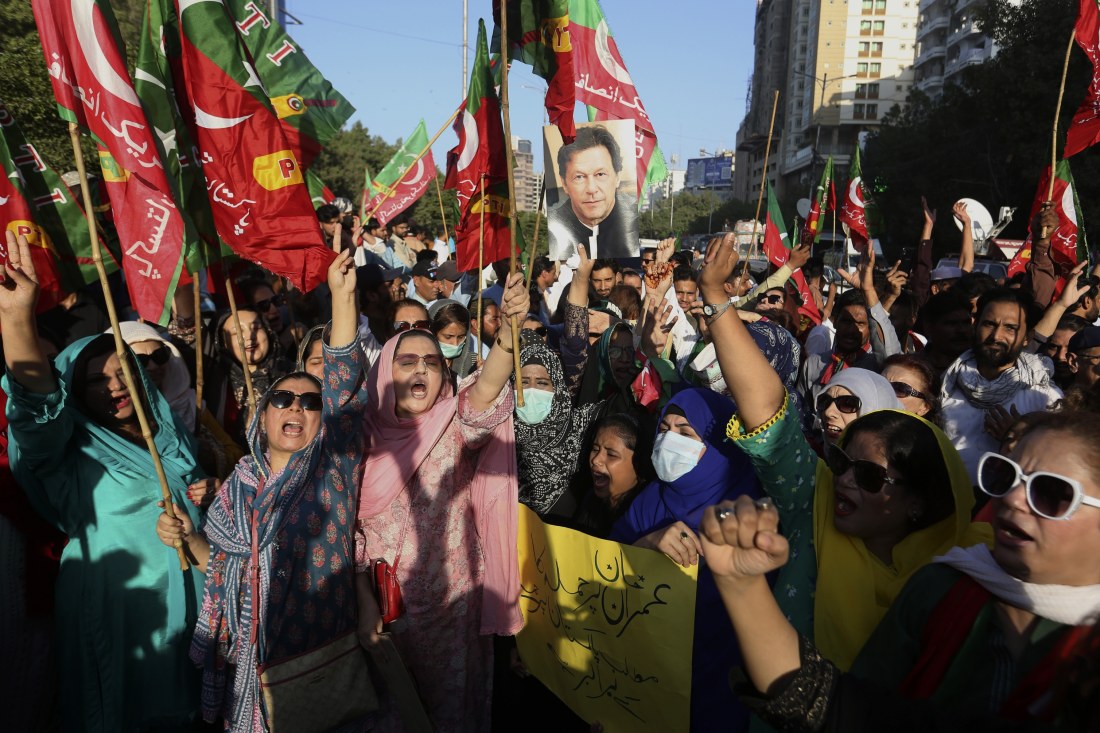
Supporters of former Pakistani Prime Minister Imran Khan’s party, ‘Pakistan Tehreek-e-Insaf’ chant slogans during a protest to condemn a November shooting incident on their leader’s convoy in Karachi. AP
Pakistan
Pakistan is entering an election year with a deeply divided body politic, as former Prime Minister Imran Khan whips up populist support against the government and the all-powerful military.
Khan’s exit from office last April came alongside his fall from the Pakistan Army’s grace. Having won office backed by the top brass, relations deteriorated due to Khan’s inept rule, fiery anti-US rhetoric, and attempts to plant loyalists in top army positions.
As support for a no-confidence vote grew, Khan claimed that Washington was behind a plot to oust him. Army chief General Qamar Javed Bajwa rejected the conspiracy, concerned about the impact it might have on relations with the US, and rebuffed Khan’s last-ditch effort to win him over with an indefinite extension as chief. In April, Khan was ousted. A coalition government headed by Shehbaz Sharif took over.
Khan and his Pakistan Tehreek-e-Insaf party then quit Parliament and took to the streets. Countrywide, violent protests intensified when Sharif’s government rejected Khan’s demand for snap polls.
On November 3, during a weeks long anti-government march on the capital, Islamabad, Khan was shot and wounded. The would-be assassin, apprehended on the spot, insists he acted alone. But Khan accuses Sharif, a cabinet minister, and a senior military intelligence official of conspiring to murder him.
All this bodes poorly for elections, due before October 2023.
Conditions on an August 2022 International Monetary Fund bailout that stopped Pakistan from defaulting on its debt also put Sharif in a bind: Rescind and lose the bailout, or roll out painful reforms and risk driving populist support for Khan.
Thanks to the floods, Pakistan now requires even more aid, which has been slow to come. Delays in relief and reconstruction could further deepen grievances and boost Khan’s base.
Meanwhile, Islamist militants are resurgent. Khyber Pakhtunkhwa province, bordering Afghanistan, has seen militant attacks on security forces spike.
The uptick owes both to the Taliban’s sheltering of Pakistani militants in Afghanistan and Islamabad’s own failed bid, mediated by the Taliban, to strike a deal with militants. Having hosted Taliban leaders for decades during the US war in Afghanistan, Islamabad appears to be struggling to impose its will on its erstwhile ally.
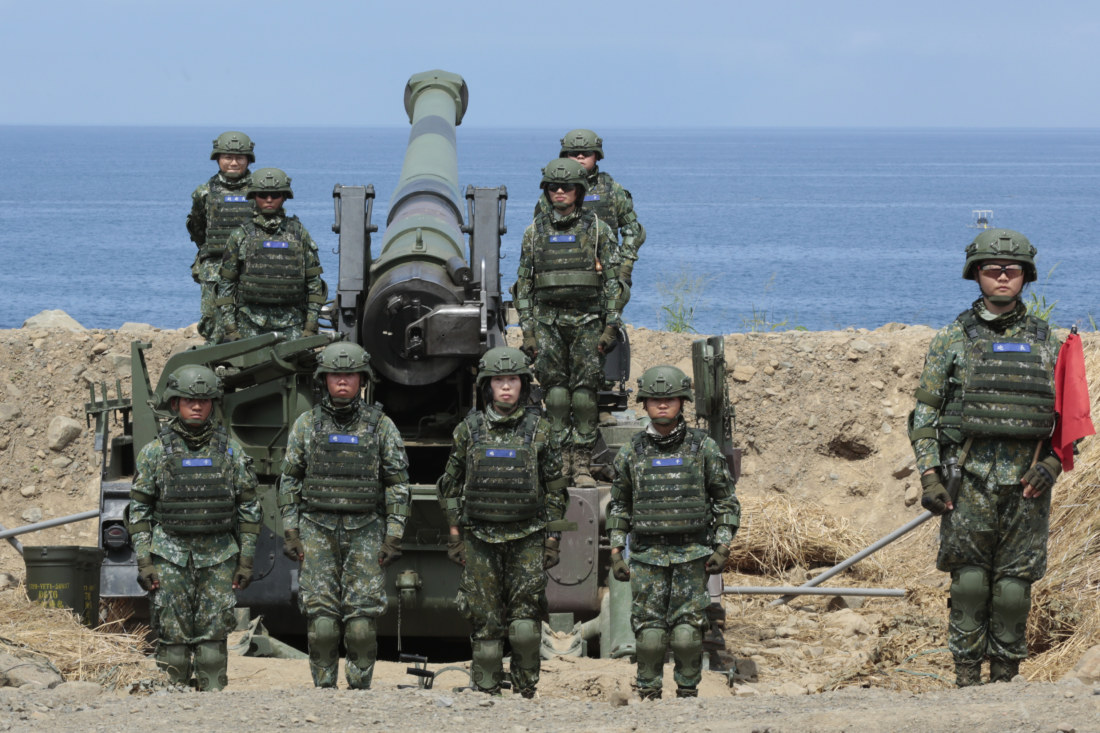
Taiwan women’s artillery during an anti-invasion drill in 2019. Getty Images
Taiwan
The biggest flash point between the US and China looks increasingly unstable, as Washington seeks to maintain primacy in the region and Beijing pursues unification with the island.
Unification has long been China’s objective. Beijing says it hopes this happens peacefully, but it will not rule out force.
Things heated up last summer, when outgoing US House Speaker Nancy Pelosi visited Taipei, Taiwan’s capital. As a legislator, Pelosi does not report to US President Joe Biden (whose administration reportedly discouraged the visit).
But Beijing unsurprisingly saw her visit as a powerful signal of support to Taipei and a harbinger of eroding US commitment to the “One China” policy. In response, it staged unprecedented military exercises around Taiwan and deployed warships and aircraft across the “median line,” which has served as the tacitly agreed upon edge of Chinese military activity in the Taiwan Strait for decades.
China seems unlikely to invade anytime soon. Breaching Taiwan’s defences would be a slog and, having seen the West’s response to Russia’s invasion of Ukraine, Beijing likely grasps the international opprobrium and economic cost an offensive could trigger – even if the US opts not to intervene militarily.
Still, near-term hazards could increase tensions. On the US side, Kevin McCarthy has already said he will visit Taiwan now he has succeeded Pelosi as speaker.
At a minimum, China would respond with shows of military strength on par with its exercises in response to Pelosi.
Should Beijing’s internal economic and political woes mount, a more forceful show of resolve is possible, particularly if the US is seen to be pressing its advantage at a time of perceived Chinese weakness.
Such an escalation would not spell war right away, but it could inch the world’s mightiest economic and military powers closer to it.
Foreign Policy
Subscribe to gift this article
Gift 5 articles to anyone you choose each month when you subscribe.
Subscribe nowAlready a subscriber?
Introducing your Newsfeed
Follow the topics, people and companies that matter to you.
Find out moreRead More
Latest In Foreign affairs & security
Fetching latest articles